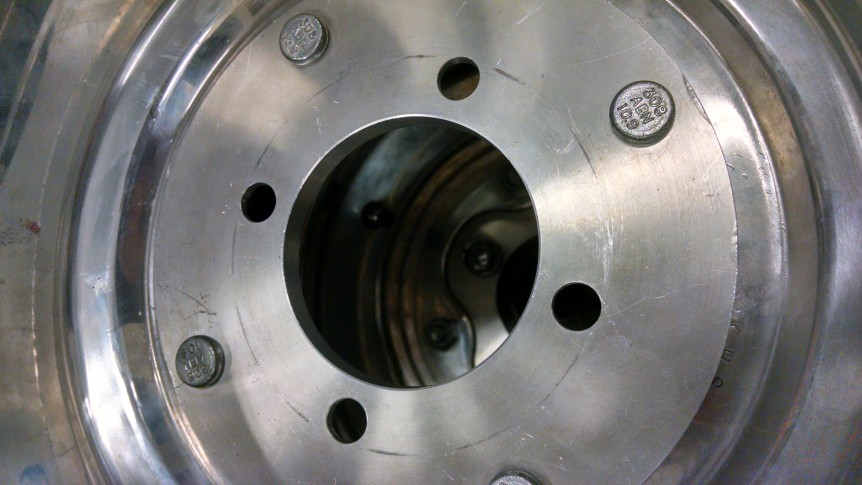A racecar’s wheels need to be mounted to hubs – in our case, there are five studs sticking out of the hubs that hold our wheel on with lugs. However, because there is some play between the holes in the wheel and the lugs, there needs to be a method of keeping the wheels from moving around on the hub; tightening the lugs is not enough.
There are two standard ways to achieve this – making the assembly lug-centric or hub-centric. This employs a countersink in either the lug holes or the hub hole on the wheels, which will keep the studs or hubs in place relative to the wheel. Because our purchased wheels have a cutaway around the hubs to “save weight”, we cannot countersink the hole for the hub – it doesn’t exist. Consequently, our only choice is to countersink the lug holes, making our wheels lug-centric.
If only it were that easy.
The FSAE competition is governed by a very specific set of rules – a 200+ page long set of rules. We are encouraged to ask technical judges for clarifications on the rules, and we asked if our modification of the wheels was allowed. The judge responding to our query seemed to distrust the safety considerations of college students, and required us to ask the wheel manufacturer whether it is safe. So, as responsible engineers, we asked the wheel manufacturer.
Apparently, the company is not allowed to disclose such important information.
This leaves us at a standstill in our design. We have three choices: modify the wheels anyway and risk not being allowed to compete, don’t modify the wheels and risk our wheels breaking loose while driving, or buy new wheels that are countersunk.
Our ethics classes berate us that when given a choice between safety and cost, we should always put safety first. However, our team doesn’t have the funds to afford a new set of wheels. We need to find another way.
By Harrison Lu, Racecar Savage

